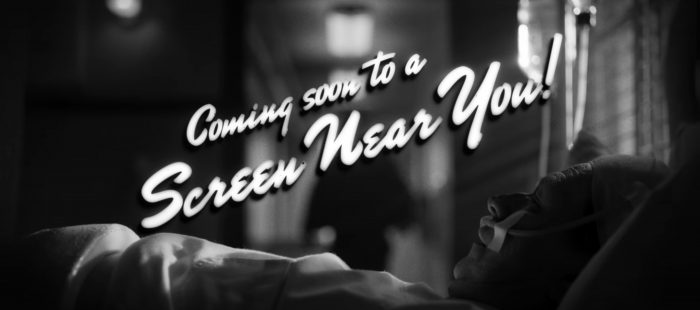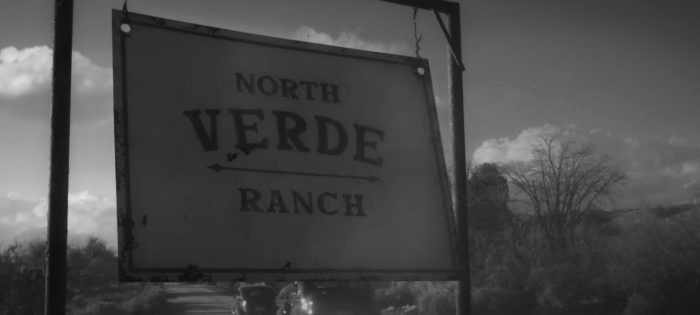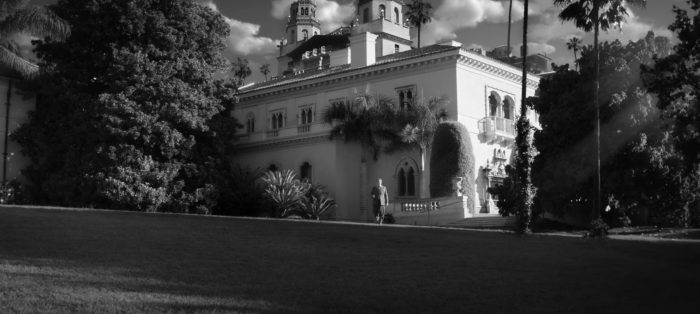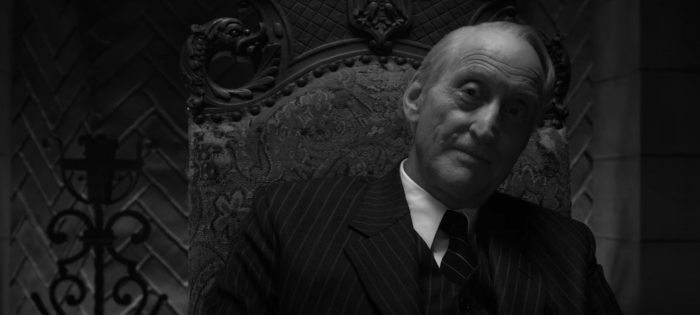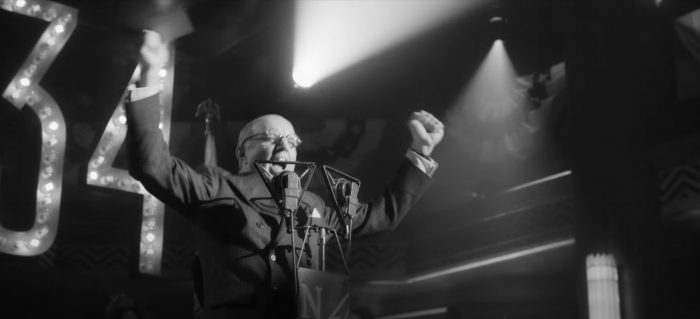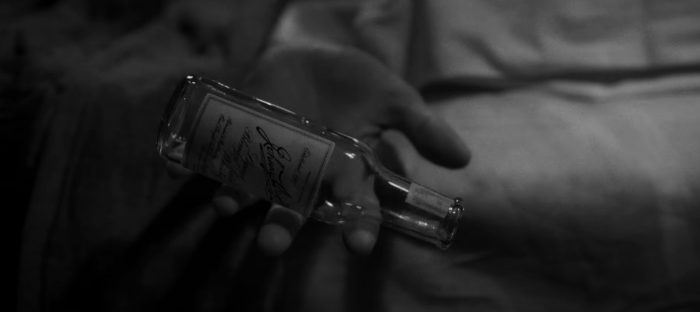'Mank' Trailer Breakdown: Who Is Who In David Fincher's New Hollywood Drama
Happy Mank day, everyone! The trailer for David Fincher's long-awaited return to feature films dropped today, and it's stylish and cheeky in all the right ways. There's even an old-timey Netflix logo to seal the deal. To be fair, though, this is really a teaser, so there's not a whole lot of detail. It's more like a mood piece introducing us to the basic story – alcoholic screenwriter Herman J. Mankiewicz (Gary Oldman) has to write Citizen Kane, on the double! And make it snappy! It's a true story, and if you're not entirely familiar with the background of who is playing who in Mank, I'm here to help with a mini-trailer breakdown.
Mank Trailer
First, a synopsis: "1930s Hollywood is reevaluated through the eyes of scathing social critic and alcoholic screenwriter Herman J. Mankiewicz (Gary Oldman) as he races to finish the screenplay of Citizen Kane."
And now, some background: Citizen Kane, often regarded as the best movie of all time, was the big feature debut of Orson Welles. Welles had made a name for himself on the stage, and an even bigger name for himself with his War of the Worlds radio broadcast. The broadcast garnered tons of press – primarily because some people thought it was a broadcast of a real alien invasion, although that's been up for debate in the years since it aired. RKO Pictures, sensing that Welles had a gift for publicity, offered the wunderkind a contract he couldn't refuse (Welles was in financial trouble at the time). Part of the contract Welles signed stipulated he would write, direct, and star in two pictures for RKO. And here's where things get a little sketchy: over the years there's been some debate as to who wrote Citizen Kane.
Both Welles and Herman J. Mankiewicz are credited with the script, but even that was an uphill battle. When Mankiewicz signed on to the project, he initially was told that Welles would be receiving all credit and that Mankiewicz was going to be an uncredited script doctor. Mankiewicz signed a contract agreeing to this, but before the film was released, he changed his mind and lobbied for credit – which he eventually got.
To further muddy the waters, film critic Pauline Kael published a book-length essay in 1971 called Raising Kane which made the case that Mankiewicz wrote the entire Kane script on his own and that Welles tried to take all the glory. It caused a big stir, but it was also discredited by several people. In the end, the truth falls somewhere in the middle: both Welles and Mankiewicz worked on the script.
But it appears that it was Mankiewicz's idea to base the script on the life of William Randolph Hearst, the influential newspaper publisher. Mankiewicz had once been in Hearst's inner circle, only to be shunned. Which brings us to who is who in the Mank trailer.
This trailer is chock-full of references to Citizen Kane. Case in point: like Kane, it starts at the end – with Mank, played by Gary Oldman, on his deathbed. A shadowy figure is coming to see him, and while we don't see the figure's face, we hear his voice, and he introduces himself as Orson Welles. Welles is played in the film by Tom Burke, who gave a great performance in Joanna Hogg's The Souvenir. Welles' voice here has an echoey quality, suggesting he's not actually there and Mank is imagining all of this. Mankiewicz died in 1953 of uremic poisoning, brought on by his excessive alcoholism.
A shot of cars speeding past a sign marked NORTH VERDE RANCH. This is a real place that Welles rented out and sent Mankiewicz there to write. Mankiewicz's alcoholism often interfered with his work, and the plan was to send him out to the ranch to keep him sober – and keep him writing. In his book Citizen Kane: A Filmmaker's Journey, Harlan Lebo wrote: "The location protected Mankiewicz from the big city and its temptations, especially high-stakes gambling and easy access to alcohol."
Here we see Mank wandering around the grounds of a palatial estate. This is San Simeon, William Randolph Hearst's castle in California. In Citizen Kane, Mankiewicz and Welles turned the castle into a place called Xanadu, drawing the name from Samuel Taylor Coleridge's poem Kubla Khan. To give you an idea of how big the estate is, here's a fun fact: there are 60 bathrooms located on the grounds and 58 bedrooms.
And here's the man himself: William Randolph Hearst as played by Charles Dance. Hearst was changed to Charles Foster Kane in Citizen Kane, and anyone who has seen the film can confirm it doesn't portray its central figure in the best light. This infuriated Hearst, who fought tooth and nail to destroy the film. A newspaper tycoon, Hearst used his influence to attack Welles in the press while also banning advertising for the movie.
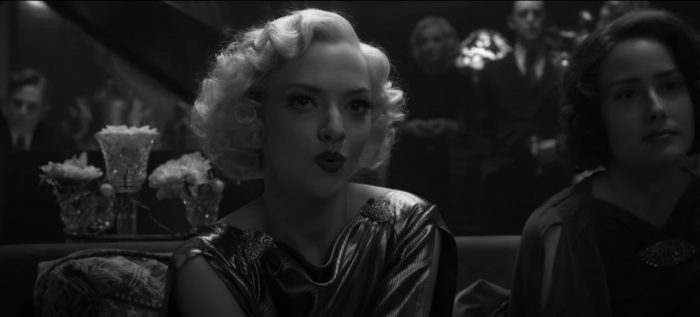 Amanda Seyfried plays Marion Davies in Mank. Davies was Hearst's lover, and she's represented in Kane by the character of Susan Alexander, played by Dorothy Comingore. The character is shrill and portrayed as massively untalented in the film, which many agree was unfair to the real Davies. Welles even tried to claim the character wasn't based on Davies. The real Davies was an actress and was involved with a scandal completely removed from Kane. In November 1924, Davies was one of the guests aboard Hearst's luxury yacht Oneida along with Hearst, movie producer Thomas Ince, and Charlie Chaplin. Rumor has it that Davies and Chaplin were having an affair – or at least that Hearst suspected them of having an affair. Late one night on the yacht, Hearst saw Davies chatting with a man he assumed to be Chaplin, and shot the man in the head. As it turned out, the gunshot victim was Ince. Ince died, and the Hearst empire promptly covered everything up. Again: this is all rumor and speculation, and there's never been anything to corroborate the stories. But it was also too juicy a story to die. The Ince affair was dramatized in the 2010 Peter Bogdanovich film The Cat's Meow, with Kirsten Dunst portraying Davies.
Amanda Seyfried plays Marion Davies in Mank. Davies was Hearst's lover, and she's represented in Kane by the character of Susan Alexander, played by Dorothy Comingore. The character is shrill and portrayed as massively untalented in the film, which many agree was unfair to the real Davies. Welles even tried to claim the character wasn't based on Davies. The real Davies was an actress and was involved with a scandal completely removed from Kane. In November 1924, Davies was one of the guests aboard Hearst's luxury yacht Oneida along with Hearst, movie producer Thomas Ince, and Charlie Chaplin. Rumor has it that Davies and Chaplin were having an affair – or at least that Hearst suspected them of having an affair. Late one night on the yacht, Hearst saw Davies chatting with a man he assumed to be Chaplin, and shot the man in the head. As it turned out, the gunshot victim was Ince. Ince died, and the Hearst empire promptly covered everything up. Again: this is all rumor and speculation, and there's never been anything to corroborate the stories. But it was also too juicy a story to die. The Ince affair was dramatized in the 2010 Peter Bogdanovich film The Cat's Meow, with Kirsten Dunst portraying Davies.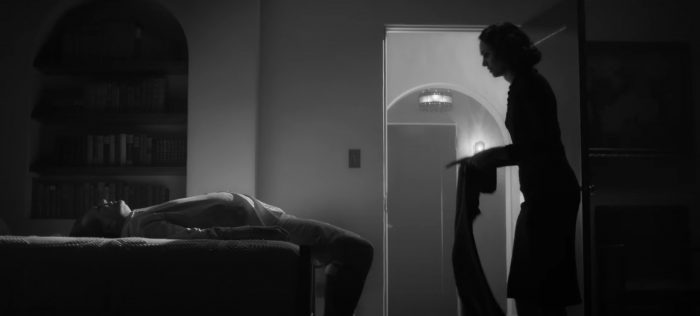
Mank's drunkenness is a major theme in the trailer, and here we see him passed out, having his pants removed by his wife, Sara Mankiewicz (played by Tuppence Middleton). Mank and Sara married in 1920, and they went on to have three children together. I'll confess I wasn't able to dig up much info on Sara for this piece, which I suppose speaks to how the wives of prominent men are often unfortunately ignored by history. Hopefully, Fincher's film gives the character something to do beyond being a long-suffering wife dealing with her troublesome husband.
This is Arliss Howard as Louis B. Mayer, the legendary film producer and co-founder of MGM. While Mayer did not have a hand in making Citizen Kane, he did have a part to play in the film's pre-release problems. In Hearst's ongoing attempt to kill Citizen Kane before it opened, he planned to run a series of articles in his papers attacking Hollywood for "hiring refugees and immigrants for jobs that could be done by Americans." To get ahead of the xenophobic controversy (and placate Hearst), Louis B. Mayer and other Hollywood executives offered RKO Pictures studio head George J. Schaefer approximately $800,000 to destroy every copy of the film. As TIME reports:
Hollywood had collective goosebumps at the thought of Hearst-owned papers going on the attack and releasing all the pent-up gossip reporters had collected. Louis B. Mayer of MGM was reportedly summoning the studios to remind RKO, Kane's studio, that its competitors controlled (and could stop) distribution. There was even talk that the other studios, eager to avoid angering Hearst, were willing to chip in to pay RKO back for the money it had spent on Citizen Kane.
Thankfully, Schaefer didn't agree to the offer, Hearst eventually gave up, and Citizen Kane saw the light of day.
Finally, the trailer ends with yet another Citizen Kane nod: just as Charles Foster Kane shuffles off this mortal coil by dropping a snowglobe, we see Mank fading away while dropping a bottle of alcohol. So it goes.
Mank hits Netflix on December 4.

